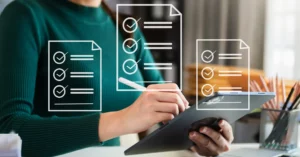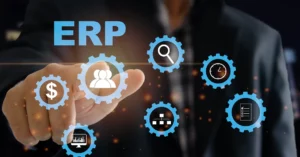Before the widespread adoption of e-invoicing implementation, businesses relied on manual, paper-based invoicing. This traditional method had its drawbacks, as it was error-prone and demanded substantial physical labor and resources. Each transaction required the creation of a paper invoice, a process susceptible to mistakes and inefficiencies.
Rise of E-Invoicing Globally
In recent years, there has been a significant global shift towards electronic invoicing, commonly known as “e-invoicing.” This transition marks a departure from the manual processes of the past. E-invoicing involves the generation of invoices in a digital format, streamlining the invoicing process and eliminating many of the challenges associated with manual methods.
The global adoption of e-invoicing reflects a collective recognition of its advantages over traditional invoicing systems. This article delves into the best practices for successful e-invoicing implementation, exploring the crucial steps and strategies to ensure a smooth and effective integration of e-invoicing systems within businesses. Throughout this discussion, we’ll emphasize the importance of careful e-invoicing implementation to capitalize on the benefits offered by this modern invoicing approach.
Determining the Need for E-Invoicing Implementation
Businesses are at a juncture where transitioning from traditional methods to modern e-invoicing practices is critical. Understanding this shift’s importance involves evaluating each business’s unique needs.
Assessing Business Requirements
Before diving into e-invoicing, taking stock of what your business truly needs is crucial. An assessment helps in understanding whether adopting e-invoicing aligns with the operational and strategic goals of the company. This proactive approach ensures that the implementation process is tailored to the specific needs of your business.
In determining the need for e-invoicing, companies should engage in a thoughtful examination of their existing processes. This involves preparing a comprehensive checklist that sheds light on the intricacies of the business. The checklist serves as a guiding document, offering insights into whether e-invoicing procedures are a suitable fit.
Checklist Preparation for E-Invoicing Adoption
Creating a checklist is akin to crafting a roadmap for successful e-invoicing implementation. This document systematically outlines the prerequisites and considerations necessary for a smooth transition. It delves into aspects such as the compatibility of existing systems with e-invoice schemas and whether any employee training is required.
The checklist is a dynamic tool that aids in decision-making. It provides a clear vision of the steps needed for effective e-invoicing adoption. It serves as a compass, guiding businesses through the labyrinth of implementation requirements, ensuring every crucial aspect is noticed.
Integration with ERP System and Employee Training
A pivotal aspect of e-invoicing implementation revolves around the seamless integration of the new system with existing ERP structures. This integration is a cornerstone for efficiency. Businesses must explore whether their ERP system can be seamlessly blended with the e-invoice schema. Additionally, identifying if employee training is needed to navigate this technological transition is paramount.
The successful amalgamation of e-invoicing with ERP systems ensures a cohesive workflow. It minimizes disruptions and enhances overall productivity. Employee training becomes an empowering tool, equipping staff with the knowledge and skills needed to navigate the intricacies of the new e-invoicing system.
Evolution from Manual to Uniform E-Invoice Format
In the not-so-distant past, businesses grappled with manual, diverse invoice formats, leading to inefficiencies and errors. However, the landscape has evolved, and today, a uniform E-Invoice format stands as a beacon of efficiency. This shift represents a crucial evolution, streamlining invoicing processes for businesses globally.
The manual invoice generation era, marked by varied forms and structures, has given way to a standardized format. The uniformity inherent in E-Invoice schemas ensures consistency across all organizations. This evolution simplifies the invoicing process, making it more accurate and less prone to errors.
Components of E-Invoice Schema
To navigate the realm of E-Invoicing Implementation, one must delve into the heart of the matter—the E-Invoice Schema. This schema comprises three integral components: Master, E-Invoice Template, and E-Invoice Schema. Understanding these components is akin to wielding the keys to a well-orchestrated invoicing symphony.
- Masters: These are the foundational elements guiding the overall structure and organization of the E-Invoice.
- E-Invoice Template: A blueprint for the invoice, ensuring a consistent and standardized appearance across the board.
- E-Invoice Schema: The underlying structure that defines the data fields and their interrelations, ensuring seamless communication and interpretation.
Importance of Understanding E-Way Bills and Return Procedures
In E-Invoicing Implementation, familiarity with the broader ecosystem is crucial. Beyond the invoice itself, businesses must comprehend the intricacies of E-Way Bills and return procedures.
- E-Way Bills: These documents accompany the movement of goods, providing a digital record. Understanding their integration with E-Invoicing is pivotal for a holistic implementation strategy.
- Return Procedures: Efficient E-Invoicing extends beyond the creation of invoices. Businesses must be well-versed in the procedures for submitting returns. This knowledge ensures compliance and a smooth overall invoicing process.
Finding the Right Vendor for E-Invoicing Implementation

Vendor Selection Criteria
Selecting the perfect vendor for your e-invoicing implementation is a critical step toward ensuring a smooth transition. When exploring potential vendors, consider the following criteria to make an informed decision:
Expertise in Invoicing and GST Compliance
Look for a vendor with proven expertise in both invoicing and GST compliance. This ensures that the chosen vendor understands the nuances of electronic invoicing within the context of the prevailing tax regulations. Knowledge in GST compliance is vital to align your e-invoicing system with the tax requirements in India.
Example: A vendor with a strong background in GST compliance will guide your e-invoicing implementation seamlessly.
Updates and Support
Opt for a vendor who commits to providing regular updates and comprehensive support. E-invoicing systems are subject to evolving standards and regulations. A vendor that stays proactive in delivering updates ensures your system remains compliant and efficient.
Example: Regular updates from the vendor keep your e-invoicing implementation in sync with the latest standards.
Integration Capability with Existing ERP Systems
Evaluate whether the vendor can seamlessly integrate e-invoicing standards into your existing ERP system. If your business already utilizes a well-acquainted ERP software, it might be more practical to reconfigure it rather than invest in a new system. This integration should be completed within a reasonable timeframe.
Example: The ability to integrate with your current ERP system is crucial for a cost-effective e-invoicing implementation.
Reconfiguration of Existing ERP System vs. Purchasing New Software

Once you’ve selected a vendor, the next decision involves whether to reconfigure your existing ERP system or invest in new software. Consider the following factors to guide your choice:
Cost Considerations
Assess the costs associated with reconfiguring your existing ERP system versus purchasing new software. While reconfiguration may be cost-effective, it’s essential to weigh the long-term benefits and potential limitations against the investment in new, dedicated e-invoicing software.
Example: Consider both short-term savings and long-term advantages when deciding between reconfiguration and purchasing new software.
Familiarity with Existing ERP
If your business is already using a robust ERP system, leveraging its familiarity can streamline the e-invoicing implementation process. Ensure that the chosen vendor can adapt your current system to accommodate the new e-invoicing standards effectively.
Example: Utilizing your existing ERP system minimizes the learning curve for your team, fostering a smoother e-invoicing implementation.
Vendor Support for Reconfiguration
Confirm that the selected vendor offers support for reconfiguring your ERP system. Frequent updates, training, and assistance in aligning your existing system with the new e-invoicing schema are vital components of successful implementation.
Example: A vendor supporting reconfiguration ensures a tailored and efficient e-invoicing integration with your existing ERP system.
Integration with E-Invoice Standards: Ensuring Timely Harmony
Why Timely Integration Matters
Timely integration with E-Invoice standards is pivotal for a seamless transition to electronic invoicing. This process ensures that your business can swiftly adapt to the standardized format, enhancing efficiency and reducing disruptions in regular operations.
Diverse Integration Methods Simplified
Exploring various integration methods is crucial for aligning your systems with E-Invoice standards. There are three primary methods: API-based, SFTP-based, and Excel utilities. Let’s break down each:
API-based Integration
API-based integration is efficient and real-time. It eliminates the need for human intervention and allows for the instant creation of e-invoices. However, it may involve a longer setup process and should be chosen based on your business needs and considerations.
SFTP-based Integration
SFTP-based integration is another option, providing a secure way to transfer data between systems. While less real-time than an API, it balances security and efficiency.
Excel Utilities Integration
For a more straightforward approach, Excel Utilities integration is user-friendly and can be quicker to set up. It may be suitable for businesses with specific budget constraints or those dealing with a moderate volume of invoices.
Navigating Budget and Invoice Volume Considerations
When deciding on the integration method, it’s essential to consider your budget and the volume of invoices your business processes. Each method comes with its own set of costs and benefits. Evaluate your financial capacity and the frequency of your invoicing activities to make an informed decision.
Remember, successful e-invoicing implementation hinges on choosing the right integration method that aligns with your business dynamics, ensuring a smooth transition, and maximizing the benefits of this transformative digital shift.
Prepare for the Launch of E-Invoicing Implementation
Challenges in Setting Up a New System
Embarking on the journey of e-invoicing implementation comes with its share of challenges. Transitioning from traditional methods to a new electronic system requires meticulous planning and execution.
Adapting to Technological Shifts
As you prepare for the launch, navigating the technological landscape may pose hurdles. Businesses often encounter challenges in integrating e-invoicing seamlessly into their existing systems. This shift demands a careful evaluation of current practices and the adoption of new, more efficient ones.
Data Migration Concerns
Moving data from manual records to digital platforms can be daunting. Ensuring a smooth transition of information without loss or corruption is crucial. It involves meticulous data migration strategies to maintain the integrity and accuracy of your financial records.
Employee Awareness and Training
The success of any e-invoicing implementation hinges on the active participation and understanding of your workforce. Adequate employee awareness and training play a pivotal role in this process.
Understanding the Significance
Employees need to grasp the significance of the shift to e-invoicing. Clear communication about the benefits, efficiency gains, and overall positive impact on the organization is essential. This understanding fosters a sense of ownership and cooperation among staff members.
Training for Proficiency
To navigate the new e-invoicing system confidently, employees must receive tailored training. Workshops, seminars, or online modules can help them gain proficiency in using the software, understanding new formats, and complying with e-invoicing standards.
Adaptation of Invoice Formats, QR Codes, and IRN
Your invoices’ visual and technical aspects undergo significant changes during e-invoicing implementation. Adapting to these alterations ensures compliance and smooth operations.
Redesigning Invoice Formats
Traditional invoice formats may not align with the requirements of e-invoicing. The redesign process involves incorporating necessary elements such as QR codes and invoice reference numbers (IRN). This adaptation ensures that your invoices meet the standardized criteria set by regulatory bodies.
Integration of QR Codes and IRN
QR codes and IRNs are integral components of e-invoicing. Understanding how to integrate these elements seamlessly into your invoicing process is vital. It enhances the traceability and authenticity of your electronic invoices, aligning with the digital transformation goals.
Conclusion
Gearing up for the launch of e-invoicing implementation demands a strategic approach to overcoming system setup challenges, ensuring employee awareness, and facilitating the adaptation of invoice formats. The successful transition to electronic invoicing hinges on meticulous planning, effective communication, and a commitment to embrace technological advancements. By addressing these key aspects, businesses can position themselves for seamless integration of e-invoicing, paving the way for increased efficiency and compliance with contemporary invoicing standards.
Read More:
Work Schedule: The Productivity Balance & 9/8 Schedule
